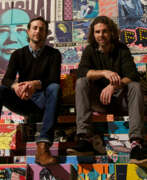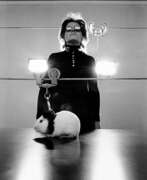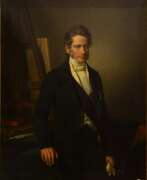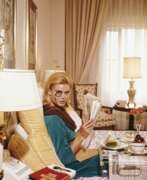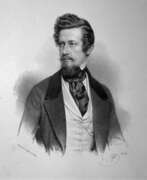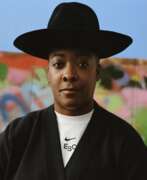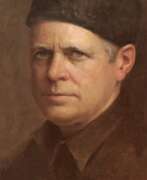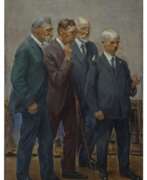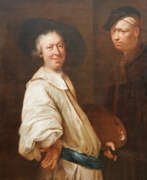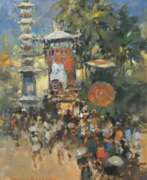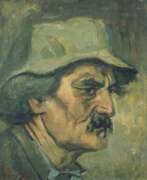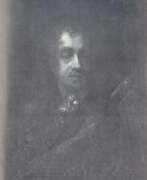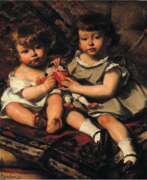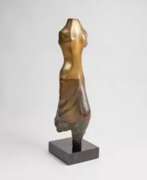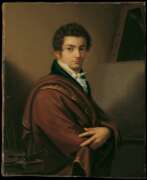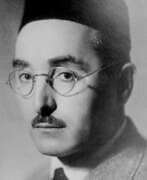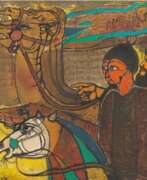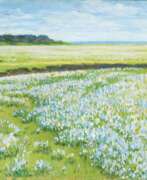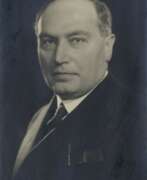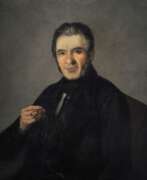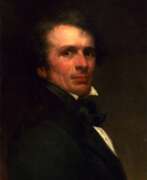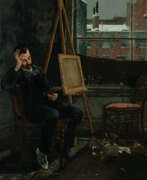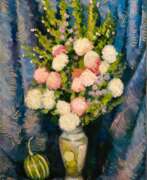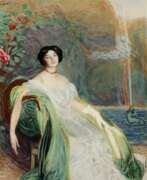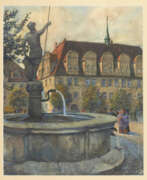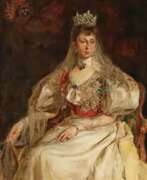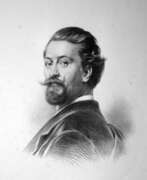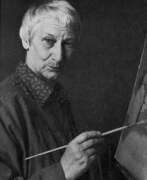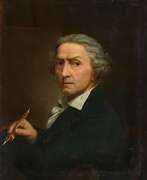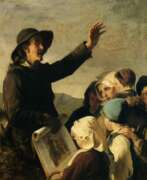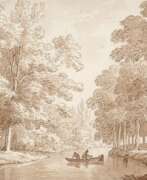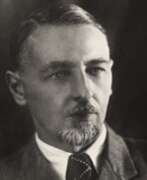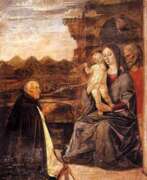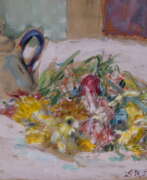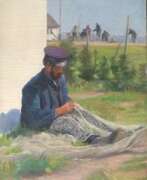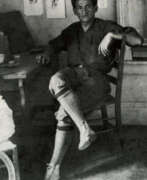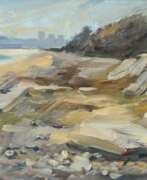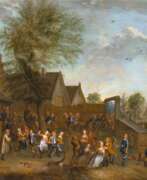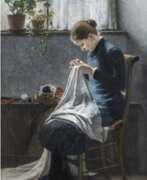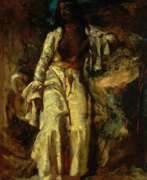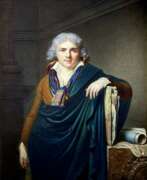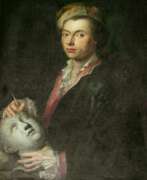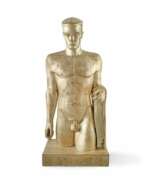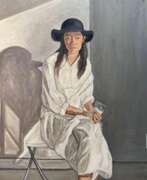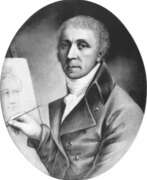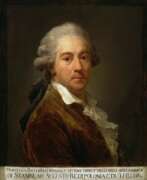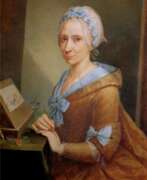Portraitist
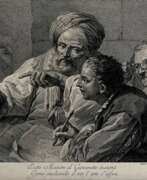

Antonio Capellan was an Italian engraver, active in a Neoclassical style. He trained with Joseph Wagner. Capellan is best known for making engraved copies of masterworks of the Italian Renaissance found in private collections, which were published in Gavin Hamilton's work, Schola Italica Picturae. He also engraved a series of portraits of cardinals titled "Calcographia R.C.A. apud Pedem Marmoreum". In 1759, he engraved portraits of Michelangelo and Giorgio Vasari for a volume of the life of Vasari, curated by Bottari.
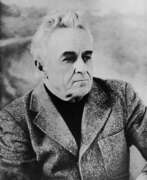

Alexander Grigorievich Maksymenko (Russian: Александр Григорьевич Максименко) was a Soviet and Ukrainian painter of the second half of the twentieth and early twenty-first centuries. He is known as a painter, graphic artist, watercolorist, and art historian.
Alexander Maksymenko worked in the genres of still life, landscape, portrait, as well as in genre painting. His genre works cover themes of collective farm life, including "Masters of the Land" and "Innovators of Collective Farm Fields". For the latter work he received the Stalin Prize. The master actively participated in exhibitions in Ukraine and abroad. His works are in the National Art Museum of Ukraine, the Museum of the History of Ukraine in World War II, as well as in other art museums and private collections.
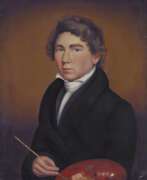

William Matthew Prior was an American folk artist known for his portraits, particularly of families and children.
About 1,500 portraits are attributed to Prior. His works are in many museums and institutions around the United States including the Harvard Art Museums, Museum of Fine Arts, Boston, and the National Gallery of Art.


Herbert Ritts Jr. was an American fashion photographer and director known for his photographs of celebrities, models, and other cultural figures throughout the 1980s and 1990s. His work concentrated on black and white photography and portraits, often in the style of classical Greek sculpture, which emphasized the human shape.
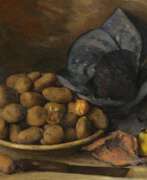

Wilhelm Schmurr was a German painter and co-founder of the Sonderbund in Düsseldorf. His style, characterized by clear expression, was influenced by the Pre-Raphaelites, Symbolists, and Realists. He received several awards and medals for his work and was a member of various art associations. Schmurr taught at the Kunstakademie Düsseldorf and inspired by the farmers after the war, he created scenes of simple life and still lifes. He was awarded the Karl-Ernst-Osthaus-Preis and the Bundesverdienstkreuz erster Klasse and became an honorary member of various artist associations.


Pavel Efimovich Ab (Russian: Павел Ефимович Аб) was a Russian Soviet artist, born on November 22, 1902, in Orel. He is renowned for his contributions to painting and graphic arts, having studied under notable mentors such as Kuzma Petrov-Vodkin and A. I. Savinov at the VKhUTEIN in Leningrad during the years 1923 to 1929.
Ab's career was deeply influenced by his experiences during the Great Patriotic War, where he served in the 21st Rifle Division of the NKVD on the Leningrad Front. His war-time sketches of city defenders and subsequent military honors played a significant role in his artistic expression. After the war, he continued to actively participate in the creative community, producing notable works like "Pavlov in Koltushi" and "Speech of V. I. Lenin at the Admiralty Shipyards".
His artworks, which often depicted military and historical themes, are preserved in various museums and private collections in Russia and abroad. Ab's commitment to the Leningrad Union of Artists until his death in 1974 ensured that his legacy would influence future generations of artists.
For enthusiasts and collectors keen on exploring Russian Soviet art, staying updated on exhibitions and sales featuring Pavel Efimovich Ab's works can be enriching. Sign up here for updates related to new product sales and auction events concerning Ab's art.


Vilmos Aba-Novák was a distinguished Hungarian artist, celebrated for his unique blend of Expressionism with classical and Renaissance influences. Born in Budapest in 1894, he was deeply influenced by his experiences in the Austro-Hungarian Army during World War I, which later permeated his art. Aba-Novák is best known for his vibrant frescoes and murals that decorate several public buildings in Hungary, including churches and civic buildings in Szeged and Budapest.
His works, characterized by dynamic compositions and a bold use of color, often depicted village fairs, circuses, and everyday Hungarian life, bringing an almost fantastical quality to these scenes. His remarkable ability to combine traditional subjects with modern artistic elements made his work a significant contribution to modern Hungarian art. Aba-Novák's art was not only appreciated in his homeland but also internationally, earning him major awards like the Grand Prize at the Paris World Exhibition in 1937 and at the 1940 Venice Biennale.
For art collectors and enthusiasts interested in exploring or purchasing Vilmos Aba-Novák's works, staying informed about upcoming sales and exhibitions is crucial. Signing up for updates can provide valuable insights into available pieces and auction events. To keep abreast of such opportunities, consider registering for newsletters or alerts specifically tailored to Aba-Novák's art. This will ensure you don't miss out on acquiring a piece of this unique artistic heritage.
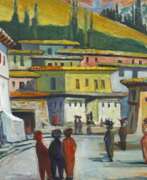

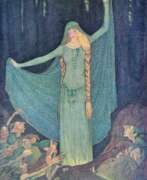

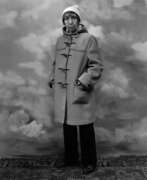

Berenice Alice Abbott was an American photographer best known for her portraits of between-the-wars 20th century cultural figures, New York City photographs of architecture and urban design of the 1930s, and science interpretation in the 1940s to 1960s.
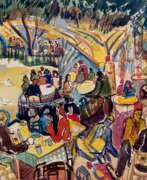

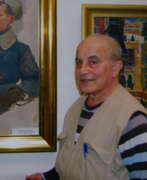

Victor Ashotovich Abramyan (Russian: Виктор Ашотович Абрамян) was a Soviet and Russian artist of the second half of the twentieth and early twenty-first centuries. He is known as a painter, a representative of the Leningrad school.
Victor Abramyan created portraits, landscapes, still lifes and genre paintings. He participated in exhibitions from the early 1970s in Leningrad. Among his famous works are "Blockade everyday life", "Still Life with a Centennial", "Leningrad. 1942. Women on Guard in the besieged city", "Young Guests" and others.
Abramyan's works are in museums and private collections in Russia and many other countries.
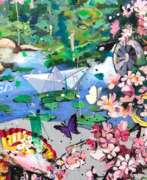

Angelo Accardi is a contemporary Italian artist. He grew up surrounded by both modern and traditional art. Although he studied fine art at the Art Academy of Naples, he never completed his training. Angelo Accardi illustrates surreal visions of everyday life under realistic backdrops of urban and natural landscapes. There is never a single meaning, but a whole story behind each painting. Ironic, striking, and playful, Accardi’s unique perspective and avant-garde style is a result of his diverse inspirations.
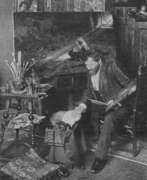

Julius Anton Adam was a German genre painter and animalist who specialised in the depiction of cats and was a member of an influential family of Munich painters.
Julius Anton Adam was a pupil of Professor Michael Echter and later Wilhelm von Dietz at the Munich Academy of Art. He later became a professor himself.
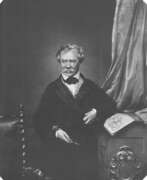

Albrecht Adam was a Bavarian painter of the first half of the 19th century. He is best known for the fact that as a member of Napoleon's Grand Army he took part in the campaign against Russia in 1812 as the official artist of the headquarters of the IV (Italian) Corps. Throughout the campaign, the artist made sketches and drawings, capturing many of the important events of the campaign. Later, many of these sketches became the basis for full-fledged paintings, and to subjects from the Napoleonic wars, which he witnessed, Adam addressed until the end of his very long life.
Albrecht Adam was also the author of memoirs, in which he described in detail the Battle of Borodino and a number of other key events of the War of 1812.
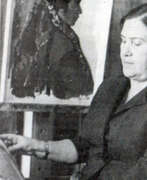

Yevgeniya Mikhailovna Adamova (Russian: Евгения Михайловна Адамова) was a Soviet artist of the second half of the twentieth century. She is known as a painter, People's Artist of the Turkmen SSR.
Yevgeniya Adamova, who moved to Turkmenistan from Ukraine in her youth, was educated at the Ashgabat Art School. During the Great Patriotic War, she creatively expressed herself as a poster artist in the TurkmenTAG agency. The artist created thematic paintings dedicated to the life of the Turkmen people and portraits. She held the post of deputy chairman of the Union of Artists of Turkmenistan.
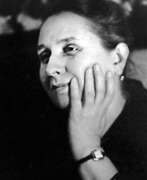

Taisia Kirillovna Afonina (Russian: Таисия Кирилловна Афонина) was a Soviet artist of the second half of the twentieth century. She is known as a painter, graphic artist, representative of the Leningrad school.
Taisia Afonina participated in exhibitions since 1940, creating portraits, landscapes, genre compositions, still lifes and etudes. At the beginning of her career she was interested in military subjects, and then delved into the genre of portraiture and lyrical landscape. Her style is characterized by tonal painting, the rendering of light and air environments and subtle coloristic combinations. In the 1980s she preferred the watercolor technique, painting flowers such as roses, daisies and tulips. Her works are in museums and private collections in Russia and other countries.
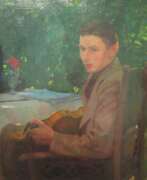

Friedrich Ahlers-Hestermann was a German painter and art writer from Hamburg. He was a member of the Hamburgische Künstlerclub of 1897, as well as of the Hamburg artist's workshop of 1832 and pupil of the Académie Matisse in Paris. After the First World War, he was a co-founder of the Hamburg Secession.
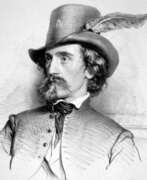

Joseph Matthäus Aigner was an Austrian portrait painter, who studied under Friedrich von Amerling and Carl Rahl. He painted portraits of Franz Joseph I of Austria and his wife Elizabeth, Franz Grillparzer, Friedrich Halm, Nikolaus Lenau, and Maximilian I of Mexico.
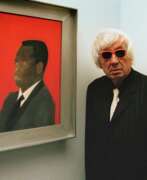

John Ronald Craigie Aitchison was a Scottish painter. He was best known for his many paintings of the Crucifixion, one of which hangs behind the altar in the chapter house of Liverpool Cathedral, Italian landscapes, and portraits (mainly of black men, or of dogs). His simple style with bright, childlike colours defied description, and was compared to the Scottish Colourists, primitivists or naive artists, although Brian Sewell dismissed him as "a painter of too considered trifles".
His career-long fascination with the crucifixion was triggered by a visit to see Salvador Dalí's Christ of St John of the Cross in 1951 after it was acquired by the Kelvingrove Gallery.
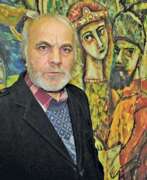

Vladimir Ivanovich Akulov (Russian: Владимир Иванович Акулов) is a Soviet and contemporary Belarusian artist. He is known as a painter, graphic artist and teacher, a representative of the second wave of Belarusian avant-garde.
Vladimir Akulov in his work has developed a unique style under the influence of expressionism, cubism, primitivism, fauvism. He is a master of portrait, landscape, still life, compositions with symbolic and allegorical subjects, illustrations of literary works. During his career the artist created several cycles of portraits, including those of famous people.
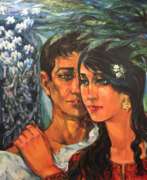

Tamam Al-Akhal is a Palestinian artist and educator living in Jordan. She studied at the Fine Arts College in Cairo. From 1957 to 1960, she taught art at the Makassed Girls College in Beirut. In 1959, she married Ismail Shammout. Al-Akhal has exhibited in Egypt, Lebanon, Jerusalem, Jordan, the United States, Kuwait, England, China, Morocco, Berlin, Paris, Rome, and Vienna. She gave a series of lectures at the Jordan National Gallery of Fine Arts in 2009. Her art appeared on more than a dozen covers of Palestinian Affairs, a magazine published by the Palestine Liberation Organization. She was also head of the PLO's Arts and Heritage section. With her husband, she painted a series of large murals known as "Palestine: The Exodus and the Odyssey."
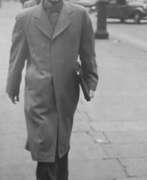

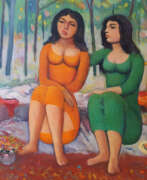

Ismail Al-Sheikhly is a contemporary Iraqui artist. He belonged to one of the first art groups to appear in Iraq, 'La Societe Primitive', founded in 1950. The group later changed its name to 'The Pioneers' and kept it into the 1970s. Some of his works are influenced by Cubism, a movement which grew in popularity throughout the 1950s, and was the preferred artistic style of one of Al-Sheikhly's important contemporaries, Hafiz Drubi. Al Sheikhly’s early works are inspired by the Iraqi village life, though his later works are more focused on abstracted colour combinations and obscured backgrounds. Women feature highly as a central theme in his work. Painted in groups quite often, Al Sheikhly’s women are streamlined with oval faces and generic bodies and seem to always be in states of coming and going, whether that be to the mosque, to the souks, or to do some domestic task.
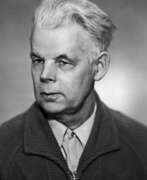

Pyotr Filippovich Alberti (Russian: Пётр Филиппович Альберти) was a Soviet and Russian artist of the second half of the twentieth century. He is known as a painter, a representative of the Leningrad school.
Pyotr Alberti created portraits, landscapes, genre paintings. He actively exhibited since 1951 in Leningrad, demonstrating his works along with the masters of his time. The artist had a broad writing and bright coloring, expressive stroke and used various techniques. He paid special attention to the study of nature. In the late period of his career, he became fond of still life paintings with favorite motifs such as peonies and watermelons.
Alberti's works are preserved in museums and collections around the world.


Balthasar Augustin Albrecht was a German painter of the first half of the 18th century. He is known as a painter who worked in portrait, historical and religious genres.
Albrecht began his career in 1719. He was appointed court painter at the court of the Elector of Bavaria and inspector-custodian of the Picture Gallery in Munich. In addition to portraits and paintings, he created frescoes and altarpieces in churches in Munich and other German cities.
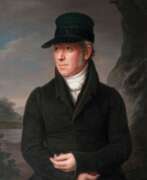

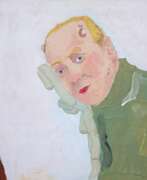

Richard Aldrich is a Brooklyn-based contemporary American conceptual artist and painter who exhibited in the 2010 Whitney Biennial. Aldrich received his BFA degree from the Ohio State University in 1998. Although mostly abstract and casual, Aldrich's paintings also betray a distinctly literary sensibility, even as he targets what he has called the essential "unwordliness of experience." He addresses his own personal history and the way that humans organize information through the formal language of painting, freely citing various aesthetic tropes with humor and irreverence. Aldrich is best known for his loose, abstract compositions, moving freely from gestural mark-making, text-based printing, and cutting the canvas to reveal stretcher bars underneath.
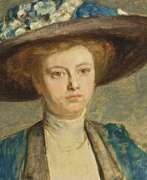

August Allebé was an artist and teacher from the Northern Netherlands. His early paintings were in a romantic style, but in his later work he was an exponent of realism and impressionism. He was a major initiator and promoter of Amsterdam Impressionism, the artist's association St. Lucas, and the movement of the Amsterdamse Joffers. Amsterdam Impressionism – sometimes referred to by art historians as the School of Allebé – was the counterflow to the very strong Hague School in the movement of Dutch Impressionism. As a professor at the Royal Academy of Amsterdam (Rijksakademie van beeldende kunsten) he fostered a cosmopolitan attitude toward art and the promotion and motivation of his students, and provided a significant stimulus to developments in modern art.
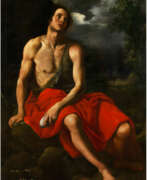

Cristofano Allori was an Italian painter of the late Florentine Mannerist school, painting mostly portraits and religious subjects. Allori received his first lessons in painting from his father, Alessandro Allori, but becoming dissatisfied with the hard anatomical drawing and cold coloring of the latter, he entered the studio of Gregorio Pagani. When still young he became a court portraitist for the Medicis, though many of his commissions were replicas of portraits by his predecessor Bronzino, or had participation by others.[citation needed. His pictures are distinguished by their close adherence to nature and the delicacy and technical perfection of their execution. His most famous work, in his own day and now, is Judith with the Head of Holofernes.
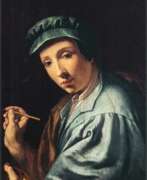

Alessandro Allori, full name Alessandro di Cristofano di Lorenzo del Bronzino Allori, was an Italian painter of the Florentine school of late Mannerism.
Allori was one of the major artists of Florence in the late 16th century. He painted prostrate images and portraits. His son Cristofano Allori (1577-1621) also became an artist.
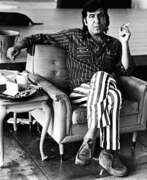

John Altoon was an American painter and representative of Abstract Expressionism. He was an important figure in Los Angeles art in the 1950s and 1960s.
He studied at the Otis Art Institute and simultaneously attended the Los Angeles Art Centre College of Design. Known for figurative works, he was a member of the Ferus group with Edward Kienholz and Robert Irwin. He suffered from schizophrenia from an early age and in fits of depression and paranoia destroyed some of his work.
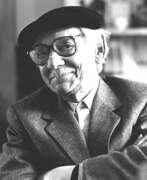

Manuel Álvarez Bravo was an Mexican visionary photographer whose work vividly illustrates the cultural heritage of Latin America. His unique perspective on life and superb photographic skills have inspired generations of photographers around the world.
Alvarez Bravo was known for his experiments with light and shadows, composition and form. His surreal photographs were often full of mystery and enigma, while also reflecting the difficulties and contradictions of Mexican society in the first half of the 20th century.
Alvarez Bravo's work marvellously combined aesthetic beauty with profound social context. His work is not only inspiring in its beauty but also a reminder of the importance of preserving peoples' cultural heritage and history.
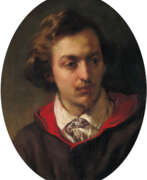

Wilhelm Amberg was a German genre painter. He was educated by the painters Carl Joseph Begas in Berlin and Léon Cogniet in Paris (1845). After this he spent a couple of years in Rome. His paintings are characterized by humour and a poetic atmosphere.
Wilhelm Amberg has won many awards and from 1886 was a Member of the Senate of the Prussian Academy of Arts, Berlin.
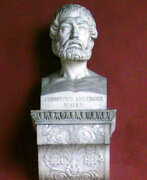

Christoph Amberger was a German painter of the Renaissance. He is known primarily as a portrait painter and is considered one of the most prominent masters of this genre of his generation.
Amberger built his career in the city of Augsburg, which was then considered one of the cultural centers of Europe. He painted numerous portraits of Augsburg patricians and their wives, prominent scholars, and the Holy Roman Emperor Charles V. These works laid the foundation for the artist's success. Amberger also designed the high altar of Augsburg Cathedral.
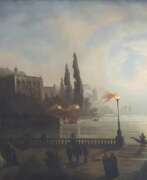

Gustav Adolf Amberger was a German painter and graphic artist. He lived in Rome for two years and learned the painting trade from Peter von Cornelius. One of his first works was the painting The Oceanides. Amberger worked as a designer in the ribbon factory founded by Philipp Trüdinger. Around 1870 he was the court painter to the Landgrave of Hesse. In Antwerp he was a pupil of Joseph van Lerius and made numerous copies, of which Les deux voies is the best known.
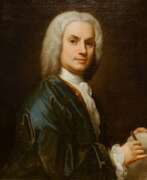

Jacopo Amigoni, also named Giacomo Amiconi, was an Italian painter of the late-Baroque or Rococo period, who began his career in Venice, but traveled and was prolific throughout Europe, where his sumptuous portraits were much in demand.
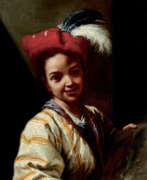

Antonio Amorosi was an Italian painter of the late Baroque period.
Amorosi studied in Rome in the studio of Giuseppe Ghezzi. He produced portraits and religious works, but he is best known for his genre paintings of bambocanti. The artist has a keen eye for the everyday lives of ordinary people, particularly children, whose world he depicts in a gentle and delicate manner. Among Amorosi's most characteristic and best works are "Boy with a Glass" and "Boy with a Dog", preserved in the Pinacoteca Comunale in Deruta.
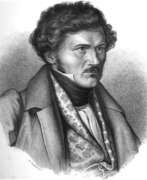

Samuel Amsler is a Swiss engraver. He studied his art under Johan Heinrich Lips and Karl Ernst Hess, at Munich, and from 1816 pursued it in Italy, and chiefly at Rome, till in 1829 he succeeded his former master Hess as professor of engraving in the Munich academy. The works he designed and engraved are remarkable for the grace of the figures, and for the wonderful skill with which he retains and expresses the characteristics of the original paintings and statues. He was a passionate admirer of Raphael, and had great success in reproducing his works.
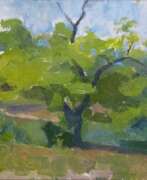

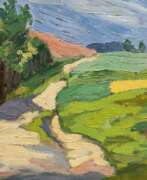

Louise Elisabeth Andrae was a German Post-Impressionist landscape painter and watercolorist. She studied with two landscape painters; Gustav Adolf Thamm in Dresden and Hans von Volkmann in Karlsruhe. She settled in Dresden, but spent long periods on the island of Hiddensee. There, she helped organize a group known as the Hiddensoer Künstlerinnenbund, an association of women artists that included Clara Arnheim, Elisabeth Büchsel, Käthe Loewenthal and Katharina Bamberg. They were regular exhibitors at an art venue known as the Blaue Scheune (Blue Barn), established in 1920 by Henni Lehmann. She also exhibited frequently with a group known as the Kunstkaten in Ahrenshoop.Wikipedia
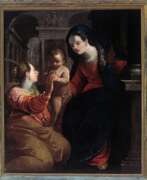

Giovanni Andrea Ansaldo was an Italian painter active mainly in Genoa. He trained under Orazio Cambiasi and possibly collaborated with Bernardo Strozzi. Ansaldo's works are typical of the Genoese eclecticism of the early 17th century, influenced by Flemish artists. Ansaldo was responsible for the fresco decoration of the cupola of the Basilica della Santissima Annunziata del Vastato of Genova. His Annunciation fresco is considered the first true Baroque painting in the city.
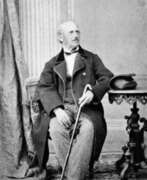

Hermann Anschütz was a German painter of the 19th century. He is known as a painter and teacher who belonged to the Düsseldorf School of painting. He was a professor at the Munich Academy of Fine Arts.
Anschütz painted mythological and historical subjects, as well as landscapes and portraits. A number of his canvases were devoted to oriental themes. In 1860 he was one of the founders of the Munich Christian Art Association.
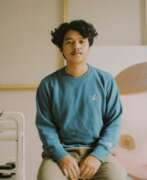

Roby Dwi Antono is a visual artist mainly creating surrealistic paintings as well as sculptures and prints. His work opens a portal to another universe where spaceships, aliens, dinosaurs and creatures with humanly features come together. These surrealistic creations that once lived only in Dwi Antono’s imagination come to life in a new realm on his canvas. Inspired by his childhood memories and love for Fiction movies, his paintings are left for the viewer to interpret.
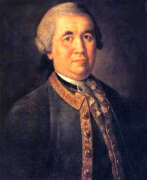

Alexei Petrovich Antropov (Russian: Алексей Петрович Антропов), a prominent Russian painter of the Baroque period, is celebrated for his significant contributions to art, particularly in portrait painting and church frescoing. Born into a family connected to the governmental sphere, Antropov's early exposure to the arts came through his work in the Chancellory of Buildings, where he began his career under the guidance of various Russian and foreign artists, including Andrey Matveyev and Ivan Vishnyakov.
Antropov's work is distinguished by his mastery in oil painting, miniatures, and icons, with a career that saw him active mainly in St. Petersburg, Moscow, and Kiev. His artistic journey was notably influenced by his studies with the French court painter Louis Caravaque and later with the Italian painter Pietro Rotari, which helped him refine his portrait artistry. The 1760s emerged as his most productive period, where he crafted numerous notable portraits, including those of Elizabeth Petrovna and Peter III of Russia, showcasing his preference for traditional icon and parsuna portrait styles characterized by sharp contrasts and dark backgrounds.
Antropov's legacy extends beyond his artworks; his dedication to art education and the community is evident in his decision to transfer his only house to the Department of Education for the establishment of a Free School. He passed away in 1795, leaving behind a rich collection of works that continue to be celebrated in museums such as the Tretyakov Gallery in Moscow and the Russian Museum in St. Petersburg.
Collectors and art experts value Antropov for his unique contributions to Russian art, his role in the transition of portrait styles, and his influence on future generations of artists, including his apprentice Dmitry Levitzky. His works, including the portraits of Catherine II and Archbishop Gavriil Petrov, are pivotal in understanding the artistic and cultural shifts of 18th-century Russia.
For those interested in exploring the depths of Russian Baroque art and the significant figures who shaped its contours, Alexei Petrovich Antropov's oeuvre offers a fascinating journey. Collectors and aficionados are encouraged to sign up for updates on new product sales and auction events related to Antropov's works, ensuring they remain informed about opportunities to own a piece of this illustrious artist's legacy. This subscription is a gateway to the vibrant world of art collection, where the beauty of the past is preserved for the future.


Francesco Faraone Aquila was an Italian engraver. In 1690 he moved to Rome where his brother Pietro had been an engraver for several decades in major workshops in the capital. Pope Clement XI gave him an order which has remained his main work - engraving the bas-reliefs of the Antoninus Pius column and its pedestal. Another important work by Francesco Aquila is the engraving of the frescoes of the dome of the Cathedral of Parma by Correggio and the painting of the Vatican chambers. Following the antique taste established in the 18th century, Aquila engraved various Roman classical works: statues, vases and triumphal arches, thus satisfying the demand of mainly foreign visitors, mainly German and English. His portraits of his contemporaries, both painters and clergymen, also enjoyed great popularity.
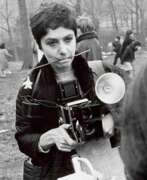

Diane Arbus was an American photographer. Arbus's imagery helped to normalize marginalized groups and highlight the importance of proper representation of all people. She photographed a wide range of subjects including strippers, carnival performers, nudists, people with dwarfism, children, mothers, couples, elderly people, and middle-class families.
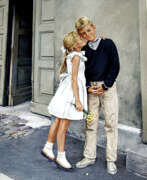

Kurt Ard was a Danish illustrator, painter and printmaker. He became internationally famous for his narrative cover artwork published in popular magazines of the 1950s-1970s, including the Family Journal, the Saturday Evening Post and Reader’s Digest. Ard started his career at various smaller newspapers and worked in the same realistic tradition as his role model, illustrator and painter, Norman Rockwell. During WW II, Kurt struggled to fulfill commission orders. His painting and his reputation and success grew steadily in the post war years. His illustrations soon appeared in major European publications, and he subsequently achieved international fame. Over the course of his career, Ard has sold more than 1000 illustrations to the best magazines in Europe, and to American publications such as McCalls, Good Housekeeping and Redbook. Today, Kurt continues to create exceptional figurative, landscape and seascape paintings with uncompromising authenticity , capturing the charm, beauty and power of these diverse subjects. His work is especially notable for its brilliant light and precise detail.
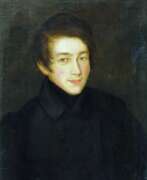

Nikolai Ivanovich Argunov (Russian: Николай Иванович Аргунов) was a Russian painter of the late 18th - the first third of the 19th centuries. He is known as a painter, graphic artist, miniaturist, representative of Russian classicism.
Nikolai Argunov is considered one of the greatest portrait painters of his time. His works are notable for their diversity, psychologism, objective approach to nature, devoid of classicist idealization and romantic heroization of the models.
The artist was a serf, was granted his freedom after the death of his master and became an academician of the Imperial Academy of Arts in St. Petersburg. He was a member of a dynasty of artists, the beginning of which began with his father Ivan Argunov.
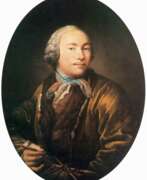

Ivan Petrovich Argunov (Russian: Иван Петрович Аргунов) was a distinguished Russian painter of the 18th century, celebrated for his significant contribution to portrait art. As a serf born into the Argunov family, who were established artists themselves, Ivan's talent was nurtured and supported by his patrons, leading to a unique position within the cultural and artistic hierarchies of his time. His specialization in portraiture allowed him to capture the essence of Russia's social elites, including members of the imperial family, as well as ordinary Russians, thereby providing a wide-ranging visual documentation of the era's societal strata.
Argunov's art is noted for its meticulous attention to detail, vibrant realism, and the emotional depth he brought to his subjects. His portraits are more than mere representations; they are intimate glimpses into the lives and characters of his sitters. Among his most famous works is the portrait of Princess Natalia Petrovna Golitsyna, showcased in the Tretyakov Gallery in Moscow. This particular piece stands out for its intricate portrayal of fabric textures and the detailed rendering of facial expressions, which have been lauded for their lifelike quality and depth.
Argunov's legacy extends beyond his artistic achievements; he played a pivotal role in shaping the course of Russian portraiture. His works are preserved in major museums and galleries across Russia, serving as a testament to his skill and the cultural richness of his time. For collectors and experts in art and antiques, Argunov's paintings are not just historical artifacts but are cherished for their aesthetic value and the insight they offer into 18th-century Russian culture.
We invite enthusiasts and collectors to stay connected with us for updates on new product sales and auction events related to Ivan Petrovich Argunov. By signing up, you will gain exclusive access to the finest pieces of Russian art and antiques, ensuring you never miss an opportunity to enrich your collection with works by one of Russia's most esteemed artists.
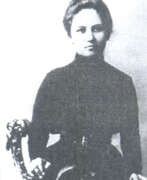

Lydia Ivanovna Arionescu-Baillayre (Russian: Лидия Ивановна Арионеско-Балльер) was an early twentieth-century Russian artist of Moldovan origin. She is known as a painter, a representative of Post-Impressionism and Neo-Impressionism.
Lydia Arionescu-Baillayre created still lifes and portraits. She was a member of the first St. Petersburg society of experimental and innovative artists "Union of Youth".
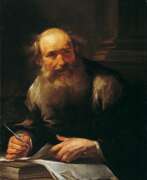

Gioacchino Assereto was a prominent Italian Baroque painter, celebrated for his dramatic and emotionally charged works that often depicted religious and historical subjects. Born in Genoa in 1600, Assereto's early career was marked by his apprenticeship with Luciano Borzone and Giovanni Andrea Ansaldo, which laid the foundation for his development as an artist. His paintings are known for their vibrant light effects and dynamic compositions, a style significantly influenced by Caravaggio during Assereto's brief visit to Rome in 1639. This influence is evident in his masterful use of chiaroscuro and sfumato techniques, which added depth and realism to his works.
Assereto's oeuvre includes powerful pieces like "The Lamentation," notable for its intense shadows and dramatic portrayal of Christ's body, and "The Torture of Prometheus," a work that showcases his later years' shift towards more emotional and theatrical compositions. His "Death of Cato" and "Ecce Homo" further illustrate this evolution, moving from refined styles to bold, expressive techniques that emphasize violent emotions through the dramatic effects of light.
Throughout his career, Assereto's works were highly regarded, with contemporary Genoese biographer Raffaele Soprani praising him as incomparable. His paintings can be found in significant collections, including the Musei di Strada Nuova in Genoa, the Cummer Museum of Art and Gardens, and the National Gallery in London. Assereto's legacy extends beyond his lifetime, with his son Giuseppe Assereto and others producing many copies of his work, ensuring the endurance of his artistic influence.
For art collectors and experts, Assereto's work embodies the Baroque spirit with its emotional intensity and technical mastery. His ability to convey deep psychological tension and his innovative use of lighting make his paintings a valuable study in the evolution of Baroque art.
If you're passionate about Baroque painting and interested in staying updated on sales and auction events related to Gioacchino Assereto's works, consider signing up for updates. This subscription will ensure you're informed about new opportunities to acquire pieces by this master of the Baroque period, enriching your collection with the depth and drama of Assereto's art.
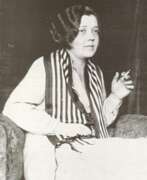

Zinaida Antonovna Astapovich-Bocharova (Russian: Зинаида Антоновна Астапович-Бочарова) was a Russian, Soviet and Belarusian artist of the twentieth century. She is known as a painter, graphic artist and teacher.
Zinaida Astapovich-Bocharova worked in the genres of portrait, landscape, propaganda poster, as well as book illustration - mainly for fairy tale books. She painted in watercolor, oil, pencil, charcoal, gouache, and pastel. Much of her work from the 1930s and 1940s was lost during the evacuation of the artist from besieged Leningrad.
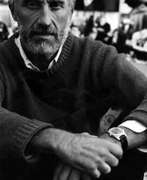

Ugo Attardi was an Italian painter, sculptor and writer. Attardi moved from Genoa to Rome in the early 1950s, where he formed the group Forma 1 together with other artists. His sculpture of Ulysses is now permanently installed in Battery Park in New York
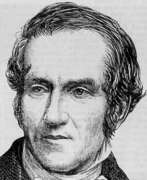

Hezekiah Augur was an American sculptor and inventor. He was self-taught and, unlike many other American sculptors of the 19th century, spent his entire career in New Haven.
Hezekiah Augur was the son of a carpenter and learned the woodcarving trade early on. He later invented a lace loom and a machine for carving piano legs. He then switched to marble.
Hezekiah Augur was a member of the Connecticut Academy of Arts and Sciences.
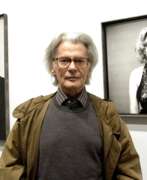

Richard Avedon was an American photographer and artist known for his iconic portraits and fashion photography.
Avedon began his career as a photographer in the late 1940s, working as a freelance photographer for magazines such as Harper's Bazaar and Vogue. He soon became known for his distinctive style, which was characterized by his use of simple, uncluttered backgrounds and his ability to capture the essence of his subjects.
Throughout his career, Avedon photographed some of the most famous people of his time, including Marilyn Monroe, Andy Warhol, and The Beatles. He was also known for his fashion photography, and his work appeared in many fashion magazines, including Harper's Bazaar and Vogue.
Avedon's work was often controversial, as he challenged traditional notions of beauty and fashion. He was known for his willingness to push boundaries, and his work was often seen as a reflection of the social and political issues of his time.
Today, Avedon is regarded as one of the most important photographers of the 20th century, and his work continues to inspire artists and photographers around the world.
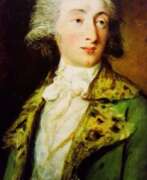

Carl Daniel David Friedrich Bach was a German artist of the late eighteenth and early nineteenth centuries, the Baroque period. He is known as a painter, graphic artist and printmaker.
Bach worked in the historical genre, was a portraitist, animalist, created canvases on allegorical subjects in the spirit of his era. In his works he combined elements of baroque and classicism. The artist often worked in the etching needle technique.


Aino Bach (Russian: Айно Густавовна Бах) was an Estonian and Soviet artist of the twentieth century. She is known as a painter, graphic artist and printmaker.
Aino Bach was one of the first Estonian printmakers to demonstrate mastery of the intaglio technique, which expanded the possibilities of engraving. Her work includes portraits, genre compositions and illustrations. She employed a variety of techniques including gravure printing, metal engraving, and color monotype. Her works often combined different techniques, giving them a distinctive flavor.
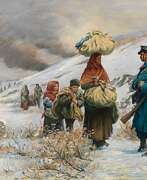

Rodolphe Auguste Bachelin was a Swiss landscape, history and portrait painter as well as a writer, historian and art critic.
He was interested in the Lombardy War of 1859 and in particular in the Franco-Prussian War of 1870 to 1871, which provided him with several subjects with its troop surge at Les Verrières. The Neuchâtel painter was greatly influenced by the writings of Rodolphe Töpffer and aspired to become a Swiss national painter.
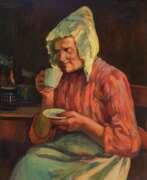

Gottfried Albert Maria Bachem was a German painter and illustrator of the Düsseldorf School. Bachem, who belonged to the Malkasten artists' association from 1921 to 1932, painted portraits, genre scenes and landscapes, and he also illustrated children's books. From 1900 he took part in numerous art exhibitions, including in Berlin.
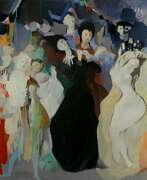

Karl Otto Bachmann, a Swiss painter, graphic artist, and illustrator, began his artistic career in Luzern before moving to Zurich and pursuing freelance work. He achieved a breakthrough in 1943 with the publication of his "Faust" portfolio. Bachmann drew inspiration from his travels across Europe, often joining circus troupes for income and creative ideas. His paintings were characterized by imaginative and virtual settings, with themes revolving around the stage, carnival, and circus. Bachmann's elegant lines, delicate colors, and harmonious compositions made him a respected book illustrator. He actively participated in numerous exhibitions throughout his life, both domestically and internationally.
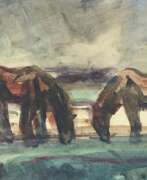

Unica Bachmann-Calcoen (Dutch: Unica Bachmann-Calcoen) was a German-Dutch artist who worked with portraits and depictions of animals, especially horses. She was a pupil of Marie de Jonge (1872-1951) and Martin Monnickendam (1874-1943).
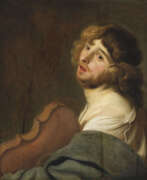

Jacob Adriaensz Backer was a prolific artist of the Dutch Golden Age, known for his dynamic portraits, religious subjects, and mythological scenes. Over a span of twenty years, Backer produced approximately 140 paintings, standing out for his quick execution and attention to detail. His ability to capture intricate details like cuffs, fur, and collars within a short period was renowned, exemplifying the Dutch wet-on-wet painting technique's success during his era.
Influenced by notable figures such as Wybrand de Geest, Peter Paul Rubens, and Abraham Bloemaert, Backer was also celebrated for his drawings of nudes, showcasing his versatile skill set. His works were a testament to the baroque movement, characterized by vivid expression and intricate detail. Notable among his works are portraits that convey the subject's essence with exceptional clarity and depth, earning him a distinguished place among his contemporaries in Amsterdam.
Despite his significant contributions to Dutch art, Backer led a life focused solely on his art, never marrying or purchasing a home, possibly sharing his living quarters with relatives. He was deeply embedded in the artistic milieu of Amsterdam, having been one of the most independent pupils of Rembrandt between 1632 and 1634, absorbing and reflecting the master's style in his works.
For collectors and experts in art and antiques, Jacob Adriaensz Backer's work offers an insight into the Dutch Golden Age's rich cultural and artistic landscape. His legacy continues to be celebrated in major museums and collections worldwide, including the Rijksmuseum in Amsterdam and the National Museum in Warsaw, where his influence on portrait and genre painting remains undisputed.
To stay updated on exhibitions, sales, and auctions related to Jacob Adriaensz Backer, subscribing to newsletters from reputable art galleries and auction houses is advisable. This ensures you receive timely information on opportunities to engage with the works of this masterful Dutch Golden Age painter.
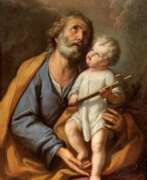

Giuseppe Badaracco also called “Il Sordo” (the Deaf), was an Italian painter of the Baroque period, active mainly in Genoa, in Liguria and in the island of Corsica. He worked for some years in Florence, where he copied many of the works of Andrea del Sarto. Returning to Genoa, he painted mainly for private customers. He worked also in Corsica (at that time part of the Republic of Genoa), where he painted locally influential paintings for some churches around Bastia.
